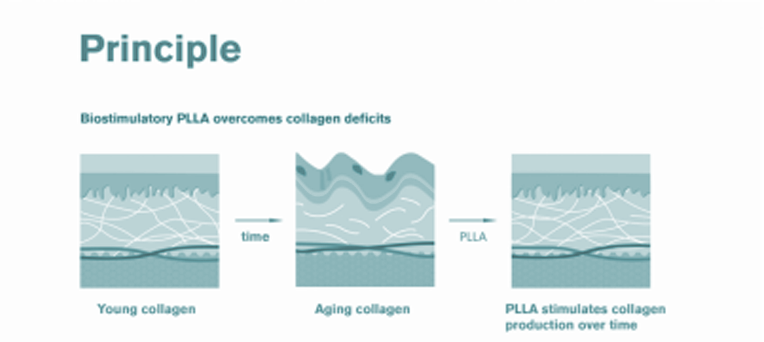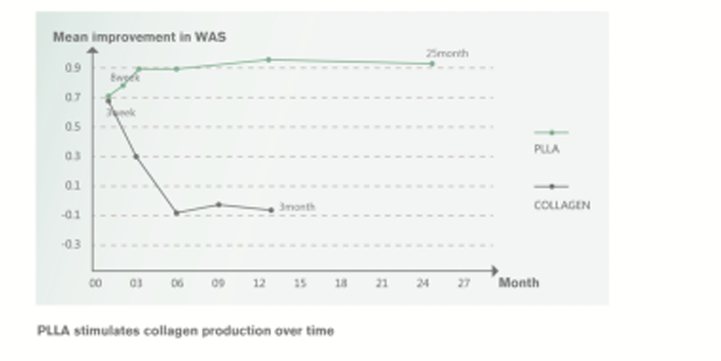AGING & PLLA
SKIN AGING
Young skin is soft, smooth, hydrated and cell-rich, and can renew relatively quickly. As we aging, we lose facial glands, which reduce the amount of oil they produce, and thus the moisture in our skin. We lose collagen and elastin, which leads to the formation of dynamic wrinkles such as smile lines, frown lines and crow's feet. As a result of repeated facial movements, dynamic wrinkles eventually become static lines, etched into the skin over time. In addition, sagging can occur because the skin no longer bounces back like it did when we were young.
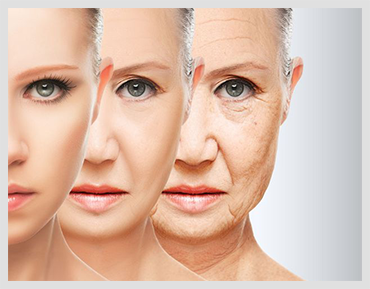

LIFESTYLE FACTORS
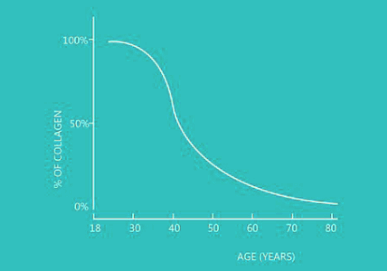
Skin aging process is influenced by both intrinsic and extrinsic factors. While degradation of collagen and elastin fibers as well as the reduced quality of the body's own hyaluronic acid are mainly genetically encoded, there are extrinsic or lifestyle factors which we all can control to a certain degree to reduce skin aging. Smoking and drinking, excessive sun exposure and stress, can all speed-up the biological clock. However, of all these aging factors sun damage by UVR poses the greatest threat.

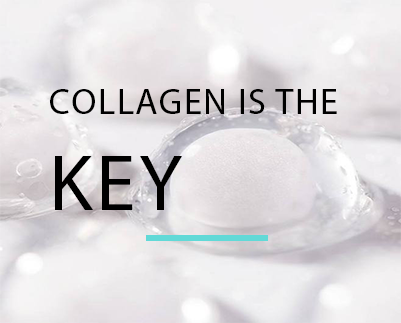
Skin aging process s influenced by both intrinsic and extrinsic factors. While degradation of collagen and elastin fibers as well as the reduced quality of the body's own hyaluronic acid are mainly genetically encoded, there are extrinsic or lifestyle factors which we all can control to a certain degree to reduce skin aging. Smoking and drinking, excessive sun exposure and stress, can all speed-up the biological clock. However, of all these aging factors sun damage by UVR poses the greatest threat.
OUR CLINICAL EXPERTS FOUND THAT
Not all treatments are the same. Some treatments are only for different areas of the face. More importantly, using different products can have different effects. Traditional collagen creams are designed to deliver collagen that can be absorbed by the skin. However, collagen molecules are too large to penetrate the dermis. Therefore, most of these therapies include vitamins and so on, just as a suitable moisturizer, which can temporarily improve the appearance of the skin. Collagen dietary supplements are designed to promote collagen production in the body. However, collagen is a protein that is broken down by the digestive system after ingestion. Therefore, the results of these types of treatment are still inconclusive. Collagen mesh as a support for soft tissue, Collagen scaffolds replicate all organs (including the heart), PLLA uses collagen fibrin scaffolds to build soft tissue and then rebuild young skin.

WHAT'S PLLA?
Poly(L-lactide),it is a good bioabsorbable and biocompatible material,it's degarded in the body, the final substance changes into carbon dioxide and water out of the body. So there are no side effects. PLLA is uesed in medicine widely now, such as disposable infusion equipment,surgicla sutures, drug delivery carrier, tissue engineering scaffold, bone anchor, injectable microcapsule, Micoballon, Implant, Organ support for elastomer materials, etc.
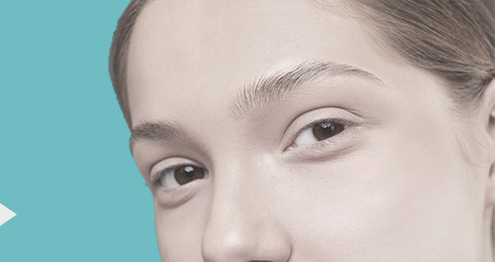
MANUFACTURING PROCESS
PLLA ( Poly-L-lactic acid ) is formed by ring-opening polymerization of l-lactic acid which is produced by starch fermentation.
MATERIAL SAFETY
PLLA stimulation for the production of new collagen has been clinically recognized worldwide. PLLA has been FDA approved since 1999 and has been used as an important facial filling material. PLLA does not have staining problems and its composition is beneficial to the human body.
PRINCIPLE
Poly (L-lactic acid) induces fibroblasts to actively regenerate dermal matrix components such as collagen after the immune response in tissues.Poly L-lactic acid) will gradually degrade into lactic acid in the tissue, and then metabolize into water and carbon dioxide out of the body.
